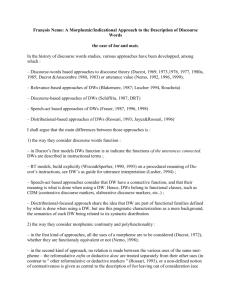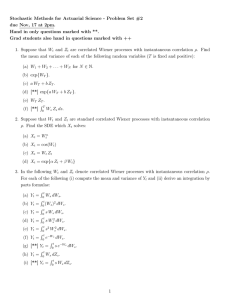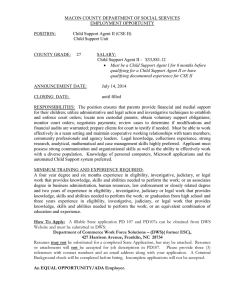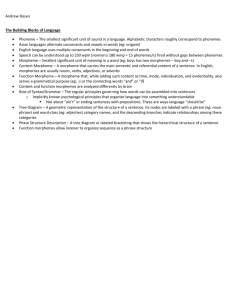A Morphemic/Indicational Approach to the Description of Discourse Words François Nemo
advertisement
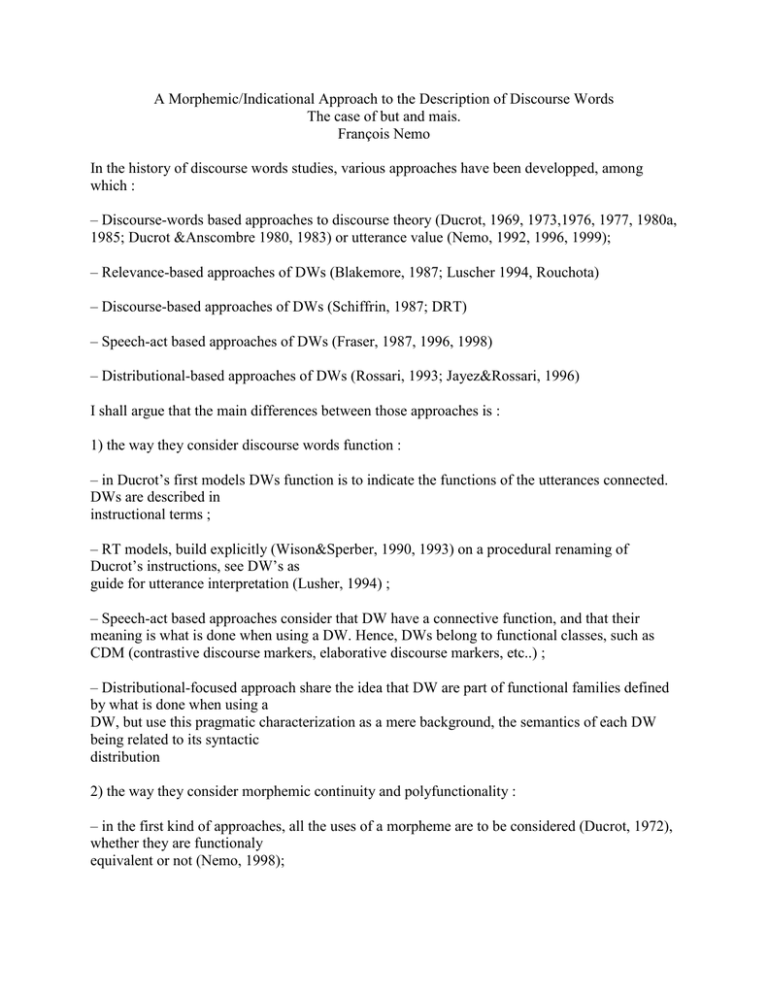
A Morphemic/Indicational Approach to the Description of Discourse Words The case of but and mais. François Nemo In the history of discourse words studies, various approaches have been developped, among which : – Discourse-words based approaches to discourse theory (Ducrot, 1969, 1973,1976, 1977, 1980a, 1985; Ducrot &Anscombre 1980, 1983) or utterance value (Nemo, 1992, 1996, 1999); – Relevance-based approaches of DWs (Blakemore, 1987; Luscher 1994, Rouchota) – Discourse-based approaches of DWs (Schiffrin, 1987; DRT) – Speech-act based approaches of DWs (Fraser, 1987, 1996, 1998) – Distributional-based approaches of DWs (Rossari, 1993; Jayez&Rossari, 1996) I shall argue that the main differences between those approaches is : 1) the way they consider discourse words function : – in Ducrot’s first models DWs function is to indicate the functions of the utterances connected. DWs are described in instructional terms ; – RT models, build explicitly (Wison&Sperber, 1990, 1993) on a procedural renaming of Ducrot’s instructions, see DW’s as guide for utterance interpretation (Lusher, 1994) ; – Speech-act based approaches consider that DW have a connective function, and that their meaning is what is done when using a DW. Hence, DWs belong to functional classes, such as CDM (contrastive discourse markers, elaborative discourse markers, etc..) ; – Distributional-focused approach share the idea that DW are part of functional families defined by what is done when using a DW, but use this pragmatic characterization as a mere background, the semantics of each DW being related to its syntactic distribution 2) the way they consider morphemic continuity and polyfunctionality : – in the first kind of approaches, all the uses of a morpheme are to be considered (Ducrot, 1972), whether they are functionaly equivalent or not (Nemo, 1998); – in the second kind of approach, no relation is made between the various uses of the same morpheme – the reformulative enfin or deductive donc are treated separately from their other uses (in contrast to " other reformulative or deductive markers " (Rossari, 1993), or a nondefined notion of contrastiveness is given as central to the description of but leaving out of consideration (see Fraser, 1997, note 3) many if not most of its uses – and the diversity of uses must not be accounted for. In recent works (Nemo, 1998, forthcoming a, forthcoming b) I have had the possibility to show that the procedural (RT) renaming of Ducrot’s instructions is misleading, because instructions are actually indications/index and not procedures, and that the general idea according to which the meaning of DWs should be metacommunicational (and hence functional) should be reversed : semantic meaning must account for metacommunicational uses but bot the other way round, metacommunicative function is not the core semantic meaning of such morphemes. My aim today is to illustrate these two claims in the case of but and mais, clearly the two most documented DWs so far, by describing the indications they provide and showing on the most different uses how the same indications are used in each context. This description will allow me to discuss the full words/tool words distinction, showing that there is no difference between the morphemes mais and but and a morpheme like table : indications are declarative utterances (of the form : There is X and Y) with no reference but with indexical backing (Look around and you will find what X and Y are in this context), the only difference between those morphemes and the so called full words (mots pleins) being the memorization of the contextual interpretation of the indications in the last case. All this allowing not only to account for all the uses of a morpheme, such as mais and but, but also for the functional interpretation of using a term, the problem in the case of DWs not being what is done when using a DW but how it is done. Université d’Orléans
